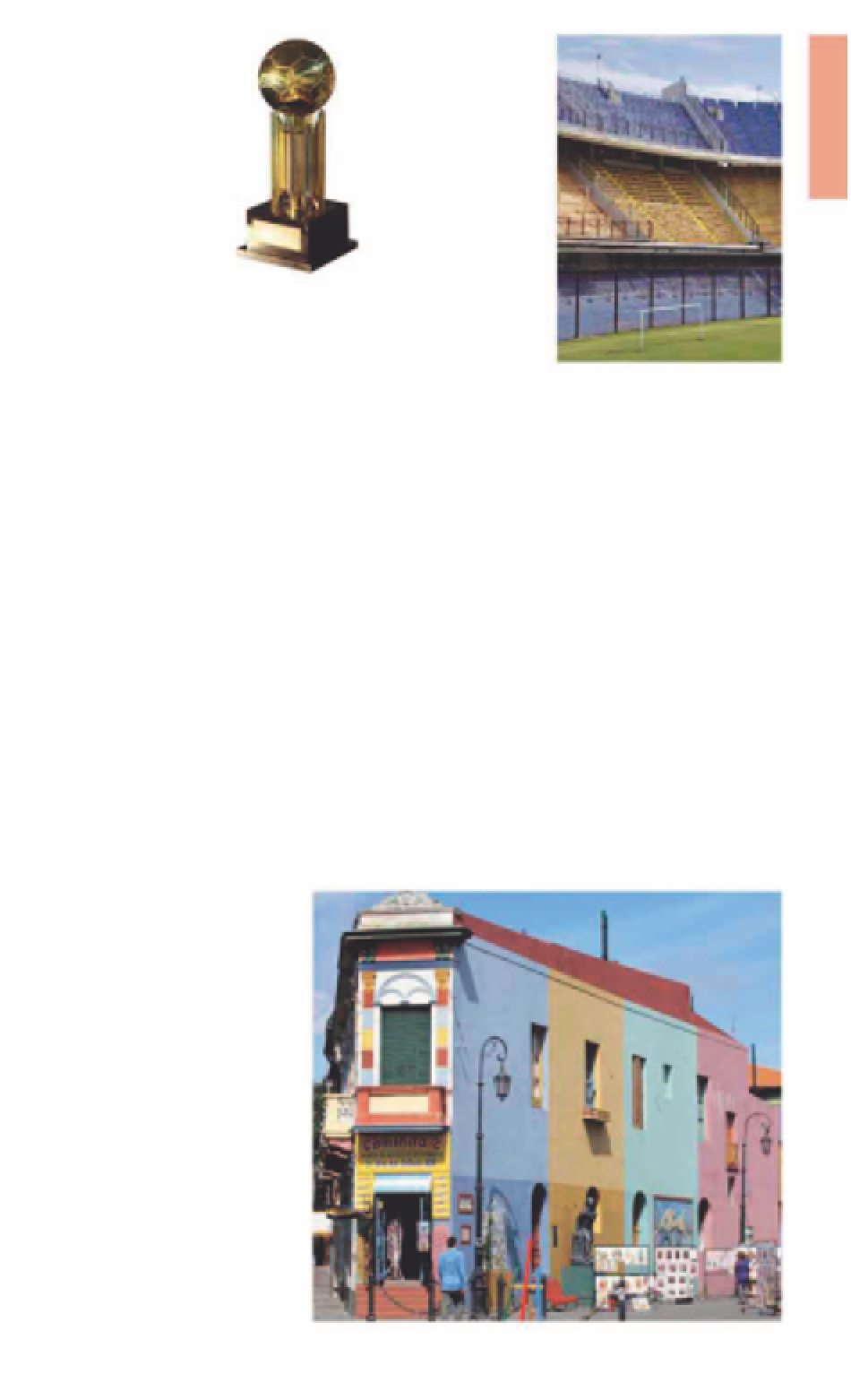Travel Reference
In-Depth Information
back to the end of the
19th century. Within the
traditional exterior there
are three modern floors
and a roof terrace,
allowing for an
extensive and varied
year-round program
of exhibitions that
include painting,
sculpture, and
photo graphy. Various
video installations,
concerts, fashion
shows, and conferences
are also included in the
eclectic schedule of events.
Several temporary exhibitions
are held each year. The primary
focus is on 20th-century Latin
American art, though not
exclusively or dogmatically so.
In past years, for example, the
museum has exhibited many
exciting works ranging from
Mexican archaeological finds
to contemporary Italian
abstract paintings.
Refurbished in 2007, the
Fundación Proa now has more
spacious exhibition areas and
improved facilities. Already
considered one of the best art
museums in Buenos Aires, this
stylish and brilliantly curated
gallery is a treasure trove for the
culturally minded tourist.
museum, the
Museo de
la Pasion
Boquense
, is
infinitely less exciting than
going to a match. It does,
however, have flashy audio
and visual gizmos and
statistic-heavy display
boards, celebrating Boca
Juniors' many trophies
and showing a
reverence for their
former players that
borders on idolatry.
Modern additions
to the museum are
El Diez
, a statue of Diego
Maradona, and a 10-ft- (3-m-)
high figure of Martín Palermo,
the club's highest goal scorer.
Exhibit at Museo de la
Pasion Boquense
Empty stands that ill to capacity for
matches at La Bombonera
by commercialization. What
draws the multitude of
photographers and makes
El Caminito a staple of glossy
coffee-table books are the
houses which flank the street
and whose corrugated zinc
walls and roofs are painted in
vivid colors. Blues and yellows,
the colors of the Boca Juniors
soccer team, predominate.
This polychromatic practice
was devised by 19th- and
early 20th-century Genoese
immigrants, who scrounged
pots of paint from wherever
they could to brighten up their
otherwise dismal, and usually
overcrowded, slum dwellings.
Now the street brims with
displays of artworks, handi-
crafts, and sculptures.
y
El Caminito
Calle del Valle Iberlucea 1300.
City
Map
1 F4.
@
29, 33, 152, 159.
Recognized as Argentina's
only open-air museum,
El Caminito (Little Lane) is a
short pedestrianized street
jutting out west from La
Vuelta de Rocha. Its name is
taken from a tango song
reminiscent of a melancholic
Shakespearean reflection on
the ravages of time, written
in 1926 by locals Peñaloza
and Filiberto. Although the
street is overcrowded with
vendors and pamphleteering
restaurant staff, its charms have
not been entirely obliterated
t
La Bombonera
Brandsen 805.
City Map
1 E3.
Te l
(011) 5777-1212.
@
29, 33, 152,
159, 168.
Open
11am−5pm daily.
Closed
restricted on match days.
7
-
=
Museo de la Pasion
Boquense:
Te l
(011) 4362-1100.
Open
10am-8pm daily.
&
8
call to
verify.
∑
museoboquense.com
Oddly named La Bombonera
(The Chocolate Box), in
reference to its particularly
compact structure, this soccer
stadium was built in 1940 and
remodeled in the 1990s by the
club's president and city mayor,
Mauricio Macri. It has seen
many exciting matches and
been packed with similarly
passionate audiences. When
empty, however, it has an eerie
stillness and solemnity, like a
battlefield devoid of its two
armies. Visiting the on-site
One of the colorful buildings lanking El Caminito



































